Ancient traditions have left us artistic images of the internal sacred body. Perhaps these representations can help us visualize what’s going on inside our energy body as we cultivate higher awareness. This article shows several images of the internal body from Daoist, Chinese, Yogic, Greek and Egyptian sources. Which images resonate most strongly in your inner experience?
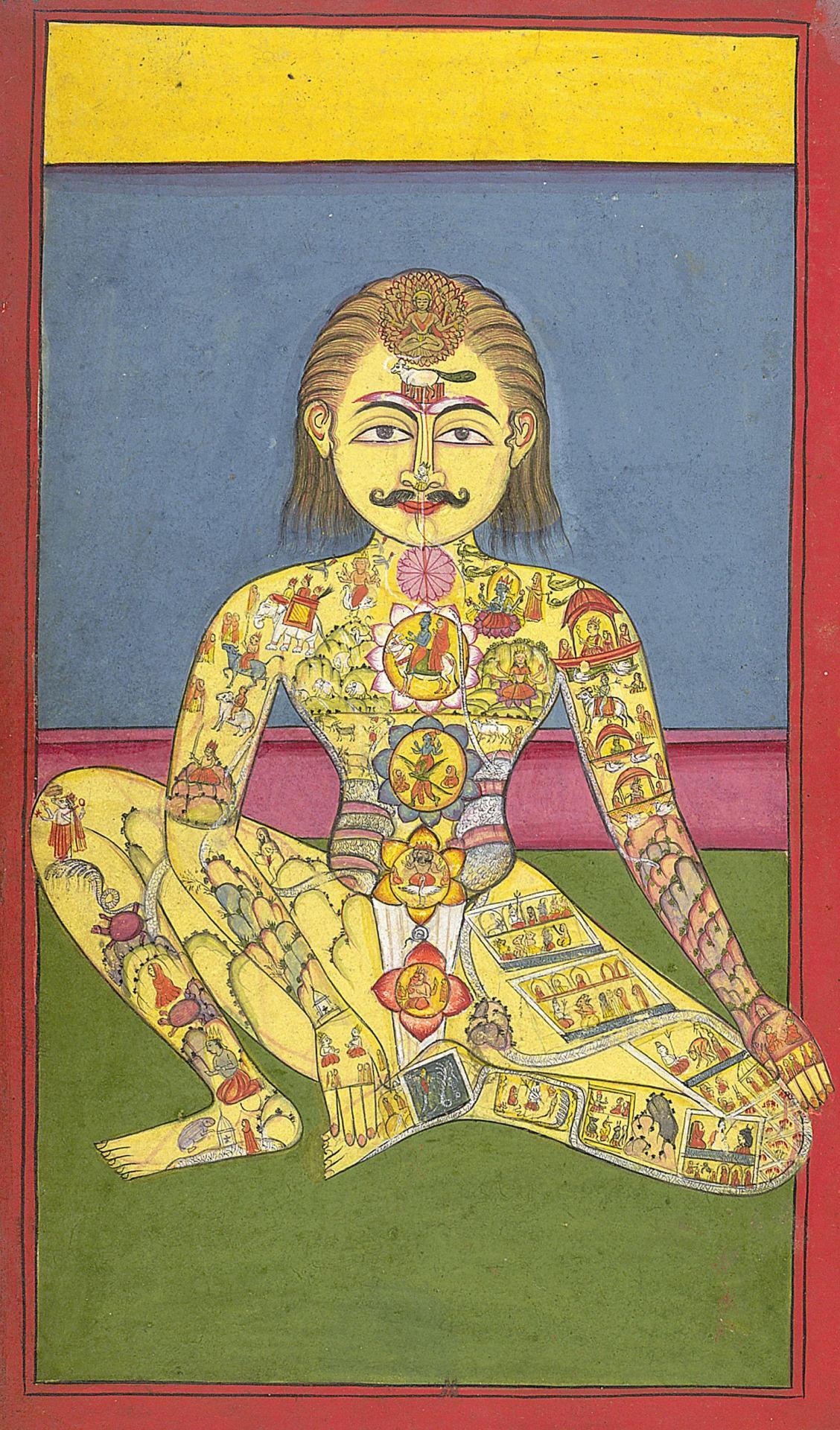
A Sapta Cakra is a depiction of the seven chakras. This comes from a Yoga manuscript in Braj Bhasa language. 1899 British Library.
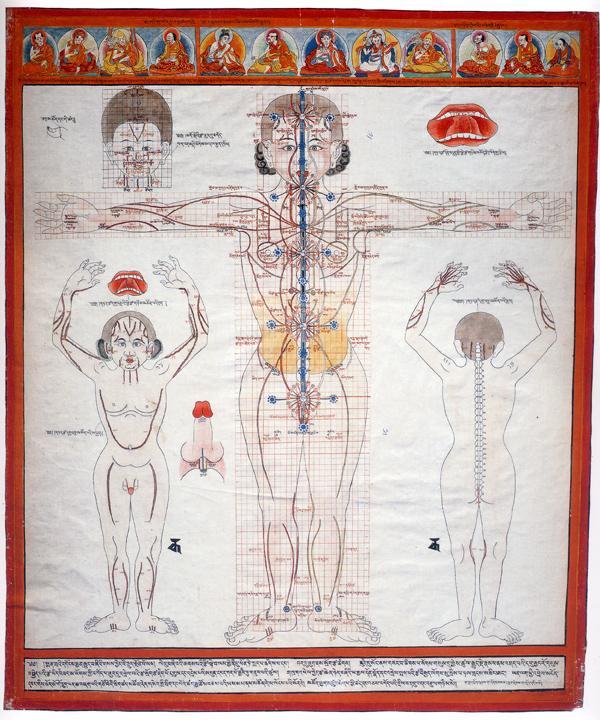
This modern Tibetan medical drawing shows the cosmic gates located at Huiyin, Dantien, Heart, Throat, and Forehead.
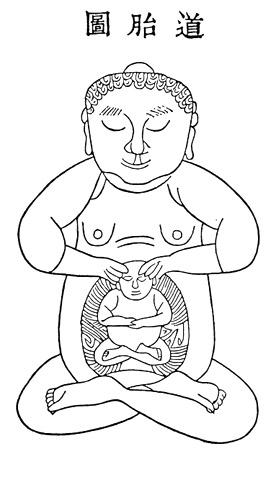

Two wood block diagrams show the development of the “immortal fetus” in the dantien, and the flowering of consciousness in the practice of internal alchemy. From the Secret of the Golden Flower by Lu Dongbin’s student, Wang Chongyang,

This drawing of the ancient Circulation of the Light, as taught in the Secret of the Golden Flower, shows the gates in relationship to hexagrams of the Book of Changes, the I-Ching.
“The work on the circulation of the light depends entirely on the backward-flowing movement, so that the thoughts are gathered together. The heavenly heart lies between sun and moon.”
The Circulation of the Light or the Cosmic Heavenly Circuit was revealed by the ‘True Man of the Beginning of Form’ (Guan Yinshi). When the light is made to move in around the body in a circle, all the energies of heaven and earth, of the light and the dark, are crystallized.”
[The Secret of the Golden Flower of Lu Dongbin as translated by Wilhelm / Baynes]
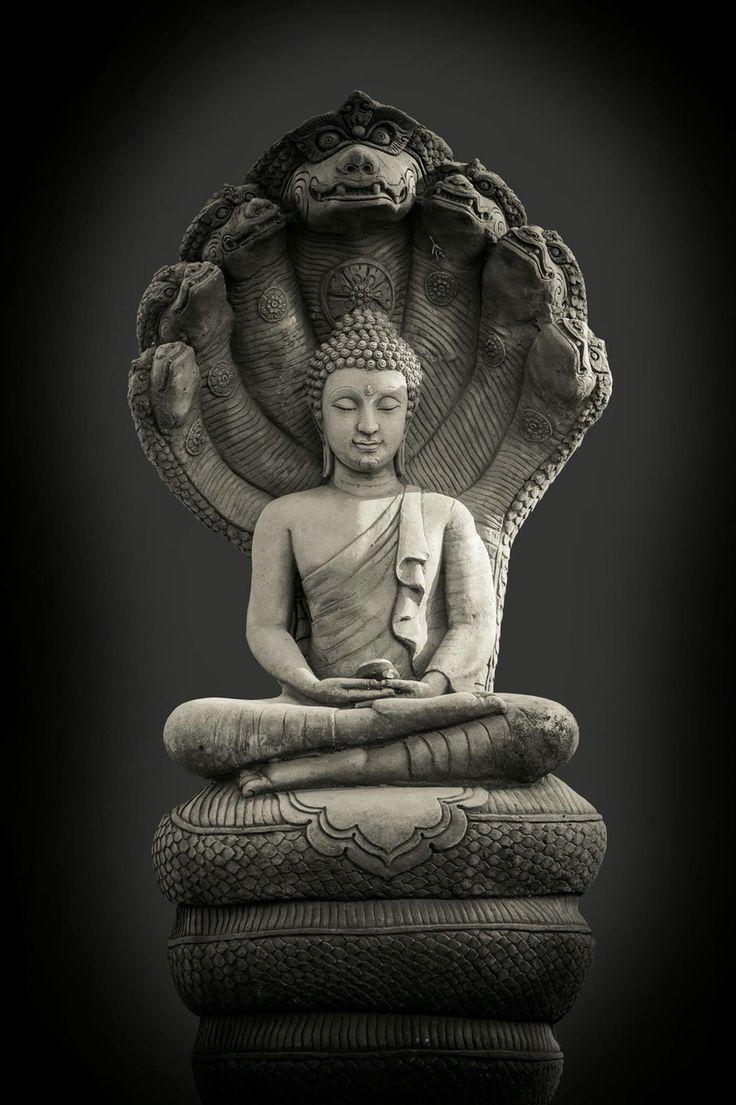
The kundalini is often depicted as a snake-like energy rising up the spine, like a serpent coiled at the base of the spine. When the kundalini is awakened, the snake uncoils, rises up, and creates a flowering and protection over the head, often depicted as a hood of snakes. It is said that Gautama Buddha was protected by a Mucalinda nāga, a snake being.
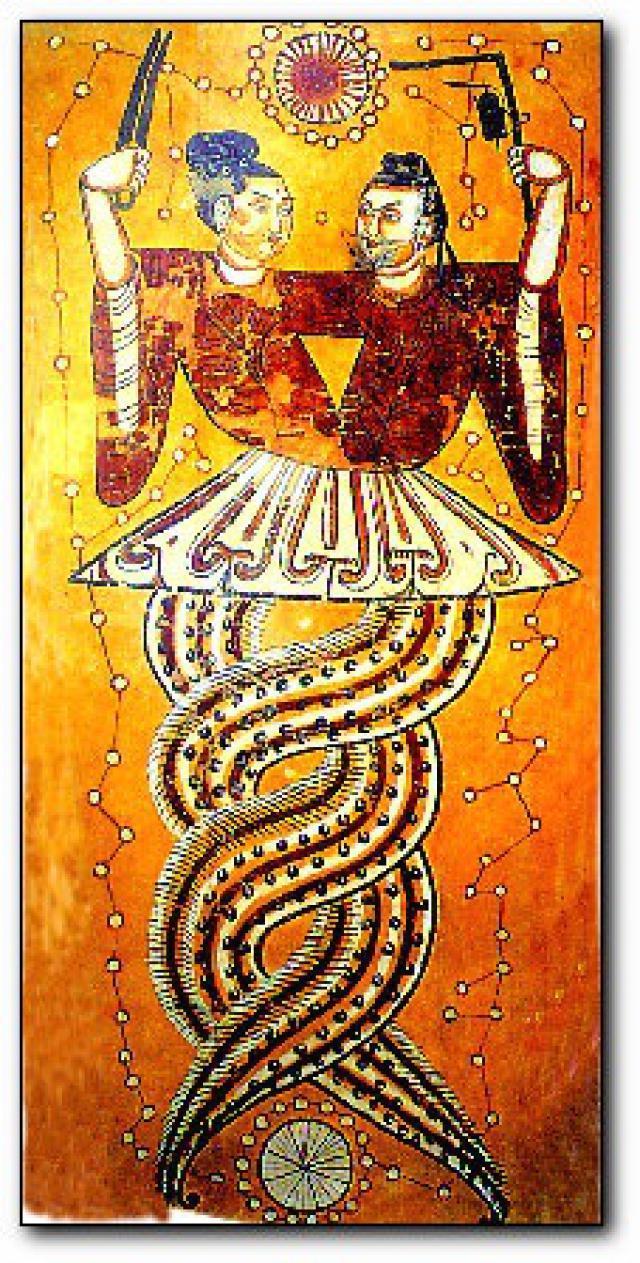 Mythological ancestors Fuxi and Nuwa are said to be the male-female root creators of the Chinese people and civilization after a great flood. They are shown here as intertwined snake creatures.
Mythological ancestors Fuxi and Nuwa are said to be the male-female root creators of the Chinese people and civilization after a great flood. They are shown here as intertwined snake creatures.
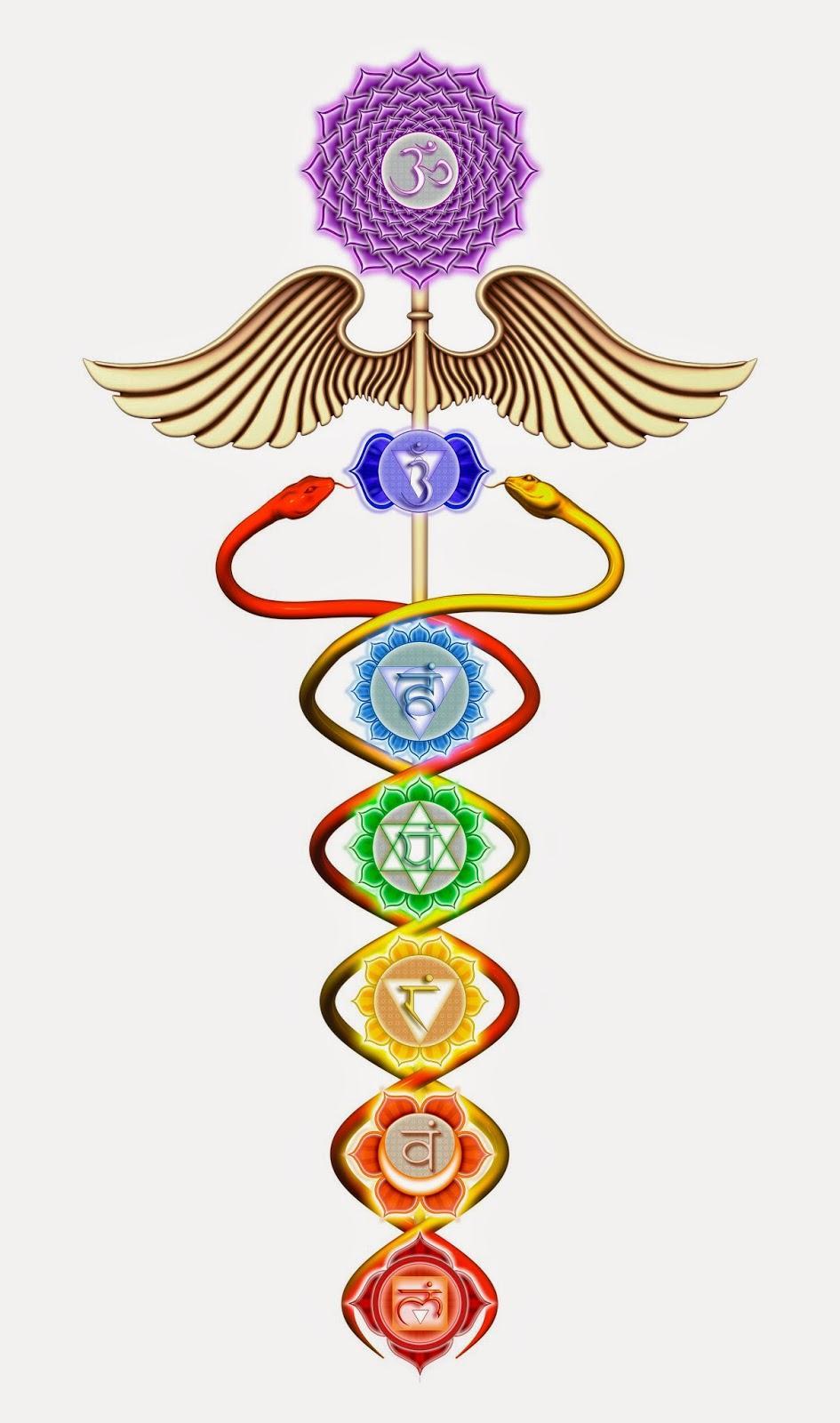
The caduceus is the staff said to be carried by Hermes in Greek and Egyptian mythology. It is a short staff entwined by two rising serpents, sometimes surmounted by wings. It is similar to Indian naga or serpent sculptures, and suggests the ascending kundalini encircling the chakras.
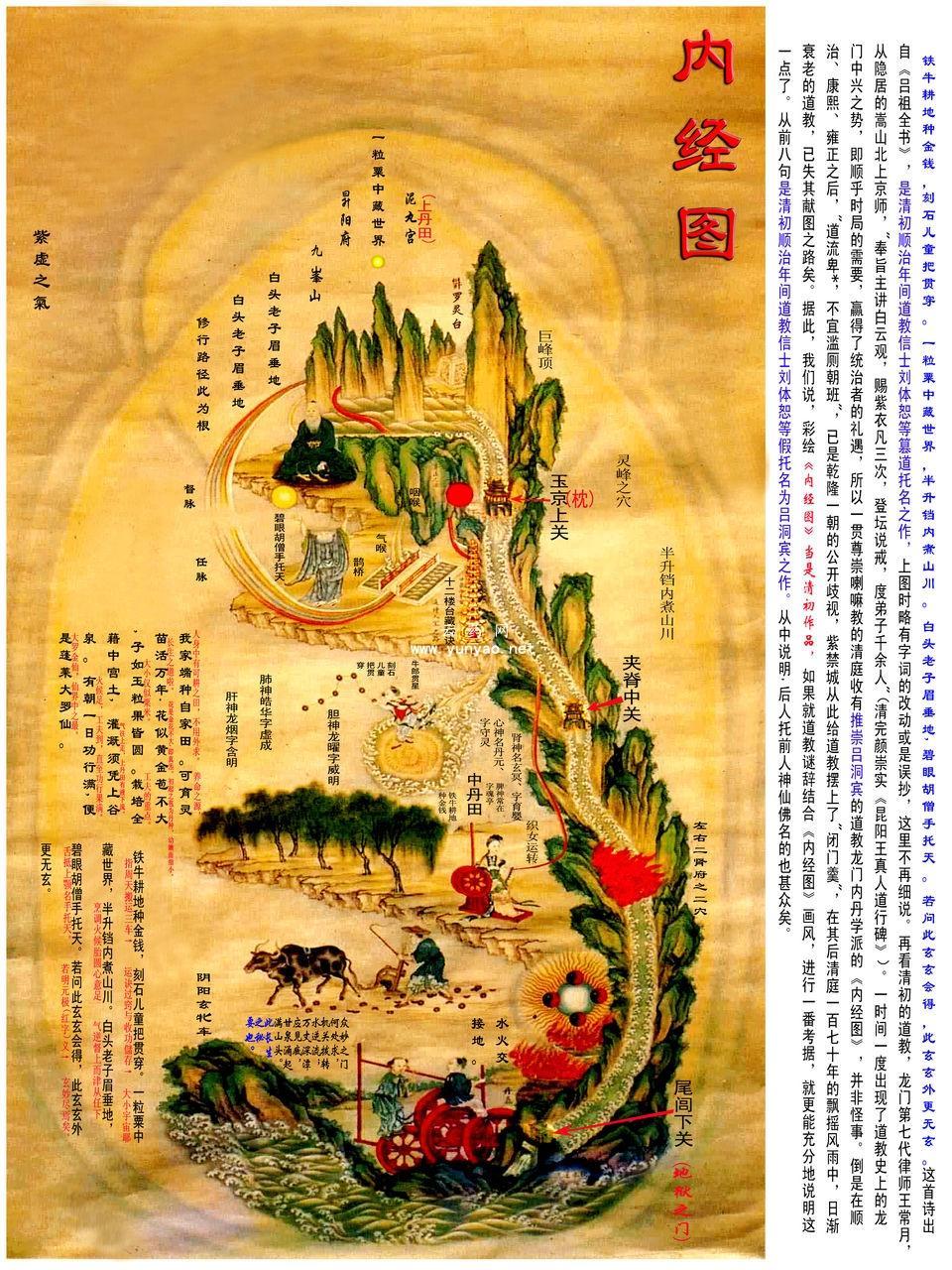
The Neijing Tu, or Inner Channel Diagram from the Yuan dynasty (1271-1368) is one of the most sacred ancient Daoist treasures of Internal Alchemy. It depicts the human energy body, and poetic map of the secrets of energy work. This image preserves a wealth of understanding about energetic cultivation and immortality. This stone carving exists at the White Cloud Temple in Beijing, and Wu Dang Mountain in Hubei Province.
The Neijing Tu shows the human body as a microcosm of Nature with mountains, rivers, paths, forests, and stars. Look closely and you will see the organs, skull, spinal column. The head as shows Kunlun Mountain. The upper dantien is the ‘cinnabar field’. Chinese constellations appear, such as the heart as Niulang “the cowherd” “Altair” holding the Beidou “Big Dipper”. Together with his archetypal lover Zhinü “the weaver girl” “Vega”, they propel qi up to the trachea or the Twelve-Storied Pagoda. The liver and gall bladder are a forest, and the stomach a granary. In the intestines “An iron ox ploughs a field where coins of gold are sown”, referring to cultivation of internal Elixir of life. At base of the spine are treadmill waterwheels run by a little boy and girl, representing yin and yang.


